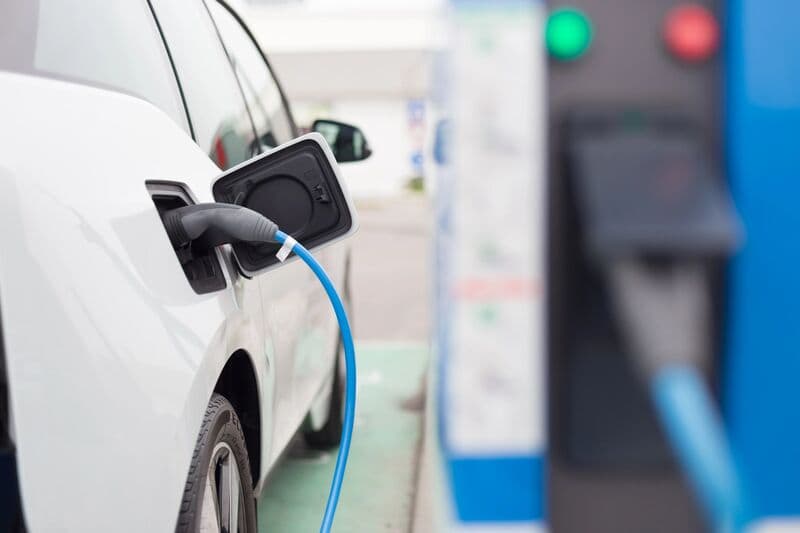Emerging Risks
Annual State of Safety 2023
Emerging Risks
As we adapt to climate change, innovative technology has taken us forward in responding to climate challenges. However, while certified products are inherently safe to use, wide-spread adoption of greener products and systems also presents its own set of considerations and risks as we adjust to these advancements.
Throughout the country in the past few years, we have seen a rise of incidents and hazards associated with uncertified electric products sold to consumers. These are readily available and often purchased online by retail consumers to use in their homes. We are monitoring this risk to keep ahead of similar incidents becoming widespread in BC.
Uncertified Electric Consumer Products Sold Online
Technical Safety BC has been made aware of an increase in incidents around the country due to the popularity of certain electric consumer products, such as lithium-ion powered mobility equipment like scooters or bikes. The increase in popularity also results in an increase of uncertified versions of these products making their way into BC through online retailers. Other uncertified electric products found online range from light fixtures to power bars and the varied availability of such uncertified products seem to be growing larger each year.

We have identified this as a safety risk on our organization’s risk registry since 2019 and have dedicated an electrical safety management team to provide technical guidance on codes and standards committees, as well as general electrical safety oversight. We’ve worked with the Standards Council of Canada (SCC), and the Canadian Advisory Council for Electrical Safety (CACES) to initiate a new approach to addressing uncertified electronics, working with authorities having jurisdiction, industry groups, manufacturers, suppliers, border services, national government agencies, and Health Canada. Many of these electric products are overseen by Health Canada as consumer products while Technical Safety BC accepts the certification marks for the products to be used in BC. Consumers should check their electric products for an approved certification mark before purchasing. Uncertified products have not been validated to be compliant to a safety standard and so are prohibited from being used or sold under the Safety Standards Act.
Consumers should be careful in selecting batteries, charging systems, and related accessories, purchasing only from credible retailers who stock reputable branded items. Be aware that oftentimes retailers, especially online retailers, may not check to see whether the items they sell have proper certification. Shopping locally may increase the chances of finding products that are approved for use in BC.
Learn more about how to use consumer products safely and find product recalls or alerts at Health Canada.
Similarly, another technical safety risk that consumers should consider is the type of equipment used for electric vehicles charging.
Electric Vehicle Energy Management Systems
Consumers using chargers for their electric vehicles should be aware of manufacturer’s guidelines, as well as periodically checking and maintaining their equipment. After-market cord sets or extenders that are not approved by the vehicle’s manufacturer may be even more susceptible to the risk of fire and shock.

For example, in 2023, we saw an instance of receptacles being damaged by a charger for an electric vehicle. Our safety officer attended a residence where a homeowner explained that the 15A 120V electric vehicle charger had been used for over one year, charging their vehicle, and later, charging another, newer vehicle. Early in the year, the homeowner saw the charger had damaged a 15A 120V general purpose receptacle. Later, the same charger damaged another 15A 120V general purpose receptacle. Both receptacles were replaced. Our safety officer tested one of the new receptacles, confirming it was wired properly and functioned normally with the correct voltage. The charger also had the proper certification marks for electronic products.
Upon inspection of the charger’s plug end, the safety officer noted that the neutral prong was corroded and charred. While it’s not fully clear if the damaged prong was caused by a problem with the previously replaced receptacle, or if the problem was within the charger itself, the homeowner was advised to stop using the charger immediately.
"Within the past years, we have collaborated with the Canadian Standards Association (CSA) to address some of the challenges posed by the need for electric charging through development of relevant standards."
As single-family homes and multi-family buildings (both strata and non-strata) are adding charging stations for electric vehicles, there is an ongoing concern that the service capacity of the home or building is not always being verified to ensure there is sufficient capacity to meet the additional load(s) being added.
Within the past years, we have collaborated with the Canadian Standards Association (CSA) to address some of the challenges posed by the need for electric charging through development of relevant standards. The CSA C22.1 No. 343-2024 Electric Vehicle Energy Management Systems and CSA TS802EV Infrastructure Deployment Guidance standards are planned for publication by the end of 2024.
In the meantime, review our information bulletins for more information on load management: Demand Factors and Use of Rule 8-106 for Single Dwellings and Electrical Vehicle Supply Equipment and Electric Vehicle Energy Management Systems. If electrical work needs to be done, be sure to contact a licensed electrical contractor experienced in electrical vehicle charging systems. They can verify and test to ensure that the existing electrical distribution system will be sufficient to accommodate the additional energy requirements of an EV charger. Owners of a strata, non-strata duplex, and those operating a business from their home cannot obtain homeowner permits and must hire a licensed contractor to perform regulated work. As with all equipment, it’s important to remember that risks can occur from poor planning, unsafe installations or improper use.
Going forward, we will only see more prevalent adoption of electric charging equipment to meet demand. As such, we continue to track incidents tied to these products as we seek to better understand any safety risks associated with them. We also look for opportunities for improvement, whether in user awareness, recommendations in regulation, or product design.
You Might Be Interested In
A Safer BC
From carbon monoxide to electrical shock and fire, learn about the Top 5 Safety Risks we identified for 2023.
Learn MoreSafety Engagement
We provide technical training and education to support our partners. We also work to influence people in the safety system to make safety-minded decisions.
Learn MoreData and Trends
Find key statistics on permits, incidents, injuries, assessments, and more.
Learn More